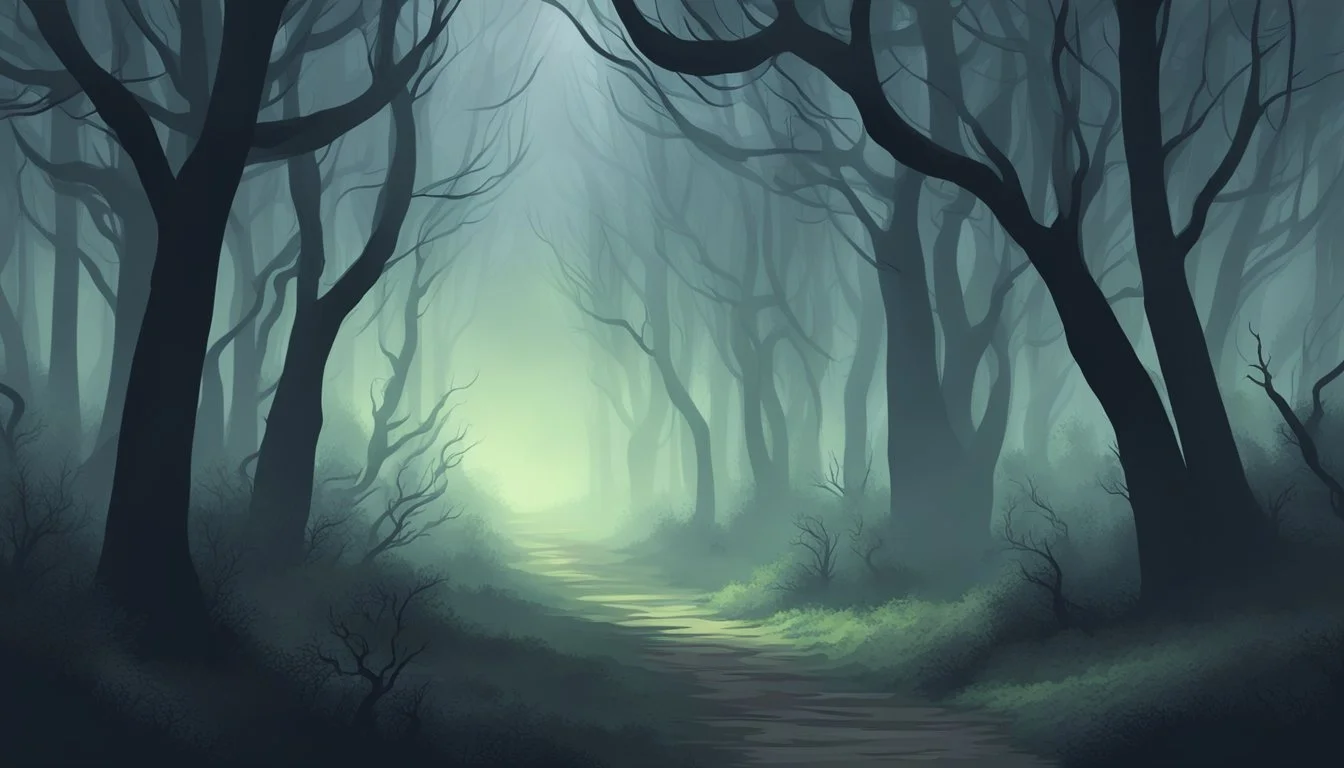Trails of Terror: David Carpenter's Deadly Hikes
California's Notorious Trailside Killer
David Carpenter, known as the Trailside Killer, terrorized the San Francisco Bay Area in the late 1970s and early 1980s. His brutal attacks on hikers, particularly women, left a lasting impact on the local outdoor community. Between 1979 and 1981, Carpenter's reign of terror was so intense that some parks posted warning signs advising visitors not to hike alone.
The chilling crimes of David Carpenter have captivated true crime enthusiasts for decades. His attacks primarily targeted individuals on hiking trails and in parks, transforming once-peaceful natural areas into scenes of horror. The fear he instilled was so profound that it altered the behavior of outdoor enthusiasts and prompted increased security measures in recreational areas.
Carpenter's crimes serve as a stark reminder of the potential dangers lurking in seemingly idyllic settings. His case has been the subject of numerous documentaries and investigations, exploring his background, methods, and the lasting impact of his actions on the victims' families and the broader community.
The Trailside Killer: A Terrifying Profile
David Joseph Carpenter earned the moniker "The Trailside Killer" for his brutal crimes along hiking paths in California. He targeted both men and women on nature trails between 1979 and 1981.
Carpenter's criminal history began long before his killing spree. He had a record of violent sex crimes dating back to the 1960s, including attempted murder and rape.
The Trailside Killer's victims were often found in remote areas, shot execution-style. His method of approach involved surprising hikers on isolated trails.
Carpenter's profile as a serial killer included:
Targeting couples and lone women
Using a .38 caliber handgun
Committing sexual assaults
Choosing victims in state parks and wilderness areas
Law enforcement struggled to catch the elusive killer for years. A breakthrough came when a survivor identified Carpenter, leading to his arrest in 1981.
Convicted of seven murders, Carpenter received multiple death sentences. He remains a suspect in additional unsolved cases from the same time period.
The Trailside Killer's reign of terror left a lasting impact on the San Francisco Bay Area. His crimes changed how many viewed the safety of local hiking trails and natural spaces.
Chronology of the Hiking Trail Horrors
David Carpenter's reign of terror began in 1979, targeting hikers on scenic trails in the San Francisco Bay Area. His first known victim was Edda Kane, found on Mount Tamalpais in August 1979.
In 1980, Carpenter struck again. Barbara Schwartz fell prey to the Trailside Killer in March on Mount Tamalpais. Anne Alderson became his next victim in October at Point Reyes National Seashore.
The following year saw an escalation in Carpenter's deadly spree:
March 1981: Shauna May and Diana O'Connell murdered on Mount Tamalpais
May 1981: Richard Stowers and Cynthia Moreland killed in Henry Cowell Redwoods State Park
May 1981: Heather Scaggs found dead in Big Basin Redwoods State Park
Carpenter's modus operandi involved targeting lone hikers or couples on isolated trails. He would often shoot his victims and sexually assault the women.
The murders sparked widespread fear among Bay Area residents. Parks posted warnings advising against hiking alone, and trail usage declined significantly.
Law enforcement intensified their efforts to catch the Trailside Killer. In May 1981, David Carpenter was arrested, bringing an end to his two-year reign of terror on California's hiking trails.
Investigation Breakthroughs and Arrest
The hunt for the Trailside Killer intensified as bodies were discovered along hiking trails near San Francisco and Santa Cruz. Police faced challenges in connecting the crimes due to the vast area covered by the killer.
A major breakthrough came when investigators released a composite sketch based on survivor descriptions. The sketch was published in the San Francisco Chronicle, generating numerous tips from the public.
DNA evidence collected from crime scenes played a crucial role in linking the murders. Forensic analysis revealed a consistent genetic profile across multiple victims, confirming they were targeted by the same perpetrator.
In May 1981, police arrested David Carpenter after a witness recognized him from the composite sketch. Carpenter's appearance and vehicle matched descriptions provided by survivors and witnesses.
Searches of Carpenter's home and vehicle uncovered damning evidence, including items belonging to victims. Ballistics tests on Carpenter's .38 caliber handgun matched bullets recovered from crime scenes.
Carpenter was charged with multiple counts of murder and attempted murder. His arrest brought relief to the Bay Area communities terrorized by the Trailside Killer for nearly two years.
Key Locations of the Killings
David Carpenter targeted hikers in scenic natural areas across Northern California. His crimes primarily focused on two regions known for their popular trails and outdoor recreation.
Santa Cruz Mountains and Surrounding Areas
The Santa Cruz Mountains became a hunting ground for Carpenter. He stalked victims in Henry Cowell Redwoods State Park, known for its towering old-growth redwood trees. Big Basin State Park, California's oldest state park, was another site of his attacks.
Castle Rock State Park, with its rugged terrain and rock formations, also saw Carpenter's presence. The dense forests and secluded trails in these areas provided cover for his crimes.
Several murders occurred on lesser-known paths throughout Santa Cruz County. Carpenter exploited the area's natural beauty to find isolated spots for his attacks.
Marin County's Mount Tamalpais and Point Reyes
Mount Tamalpais State Park in Marin County was a key location for Carpenter's killings. The mountain's extensive trail network and scenic views attracted many hikers, giving him ample opportunities to find victims.
Point Reyes National Seashore, known for its diverse ecosystems and coastal trails, was another site of Carpenter's attacks. The park's remote beaches and forested areas became dangerous for unsuspecting hikers.
Carpenter's crimes in Marin County highlighted the vulnerability of outdoor enthusiasts in seemingly safe natural settings. The contrast between the area's beauty and the horror of his actions shocked local communities.
The Trials and Conviction
David Carpenter faced multiple trials for his crimes as the Trailside Killer. In 1984, he was convicted of two murders in Santa Cruz County and sentenced to death.
A second trial began on January 5, 1988, in San Diego. Deputy District Attorney John Posey prosecuted the case, calling over 60 witnesses. Carpenter was represented by public defenders Frank Cox and Steve Berlin.
The San Diego trial focused on five murders committed in Marin County in 1980. After deliberation, the jury found Carpenter guilty of all five first-degree murder charges.
Carpenter's convictions included:
Murder (7 counts)
Attempted murder
Kidnapping
For his crimes, Carpenter received additional death sentences. He was sent to San Quentin State Prison's death row, where he remains today at the age of 94.
While officially convicted of seven murders, authorities believe Carpenter may be responsible for more. His reign of terror on Northern California hiking trails left a lasting impact on the region.
Survivors and the Aftermath
David Carpenter's reign of terror left few survivors in its wake. Among those who narrowly escaped death were Steven Haertle and Ellen Hansen. On March 29, 1981, the couple was hiking on Mount Tamalpais when Carpenter attacked them.
Hansen was tragically killed, but Haertle managed to survive despite being shot in the neck. His testimony proved crucial in later identifying and convicting Carpenter. Haertle's resilience in the face of such trauma was remarkable.
Another survivor, Lois Rinna, encountered Carpenter on a trail in 1960, years before his killing spree began. Though she was brutally assaulted, Rinna survived the attack. Her testimony helped convict Carpenter of assault with intent to commit murder.
The survivors' experiences had lasting impacts:
Physical and emotional trauma
Ongoing medical treatments
Participation in legal proceedings
Advocacy for victim support and trail safety
Their bravery in coming forward and testifying against Carpenter played a vital role in bringing him to justice. Their stories serve as a testament to human resilience and the importance of supporting survivors of violent crimes.
Impacts on Hiking Culture and Trail Safety
David Carpenter's crimes on hiking trails in the Santa Cruz Mountains near San Francisco left a lasting impact on hiking culture and trail safety practices. His attacks shook the outdoor community and prompted changes in how hikers approach solo treks.
California State Parks implemented new safety measures in response. These included increased ranger patrols and the installation of emergency call boxes along remote trail sections.
Hikers became more vigilant about personal safety. Many adopted practices like:
Hiking in groups
Carrying personal safety devices
Sharing detailed trip plans with others
Staying on well-traveled paths
The incidents highlighted vulnerabilities in isolated trail areas. This led to debates about balancing public access with security concerns in wilderness spaces.
Trail organizations stepped up educational efforts. They began offering more safety workshops and publishing guidelines for solo hikers.
The attacks also sparked discussions about gender dynamics in outdoor recreation. Many women reported feeling less safe exploring trails alone after Carpenter's crimes came to light.
While time has mellowed some fears, Carpenter's legacy continues to influence hiking culture. His crimes serve as a sobering reminder of potential dangers, even in seemingly idyllic natural settings.
Media Coverage and Cultural Influence
David Carpenter's brutal crimes captured public attention and influenced media portrayals of serial killers. His case sparked true crime retellings and even made an unexpected connection to reality television.
The Real Housewives of Beverly Hills Connection
David Carpenter's crimes touched the life of a reality TV star's family. Lois Rinna, mother of "The Real Housewives of Beverly Hills" cast member Lisa Rinna, survived an attack by Carpenter in 1960.
Lois shared her harrowing experience on the show in 2019, bringing renewed attention to Carpenter's early crimes. Her story highlighted the long-lasting trauma inflicted on survivors and their families.
This unexpected link between a notorious serial killer and popular reality TV generated significant media coverage. It introduced Carpenter's crimes to a new audience unfamiliar with his violent history.
True Crime Retellings and Documentaries
Carpenter's "Trailside Killer" crimes have been featured in numerous true crime documentaries and television series. Shows like "Very Scary People" examined his murderous spree and the investigation that led to his capture.
These retellings often draw parallels between Carpenter and other infamous California killers like the Zodiac. They analyze his modus operandi and explore theories about his motivations.
Documentaries frequently include the composite sketch that helped identify Carpenter. This image became iconic in the case, representing the terror he instilled in Bay Area hikers.
True crime media has kept Carpenter's story in the public consciousness. It continues to fascinate audiences and serve as a cautionary tale about the dangers that can lurk on seemingly peaceful trails.
Reflections on the Legacy of David Carpenter
David Carpenter, known as the Trailside Killer, left an indelible mark on the history of crime in California. His reign of terror in the late 1970s and early 1980s forever changed the perception of safety on hiking trails in the San Francisco Bay Area.
Carpenter's legacy is one of fear and caution. His actions prompted increased security measures on popular hiking paths and raised awareness about personal safety in outdoor recreational areas.
As a serial killer, Carpenter's crimes were particularly disturbing due to their location. He targeted victims in places typically associated with peace and natural beauty, shattering the illusion of sanctuary in nature.
The legal system's response to Carpenter's crimes was significant. He received multiple death sentences, highlighting the severity of his actions and the justice system's stance on violent sex crimes.
Carpenter's case became a focal point for discussions about rehabilitation and the criminal justice system. His prior convictions and releases raised questions about the effectiveness of incarceration and treatment programs for violent offenders.
The Trailside Killer case remains a subject of study for criminologists and law enforcement. It serves as a grim reminder of the potential dangers lurking in seemingly safe environments and the importance of vigilance.







